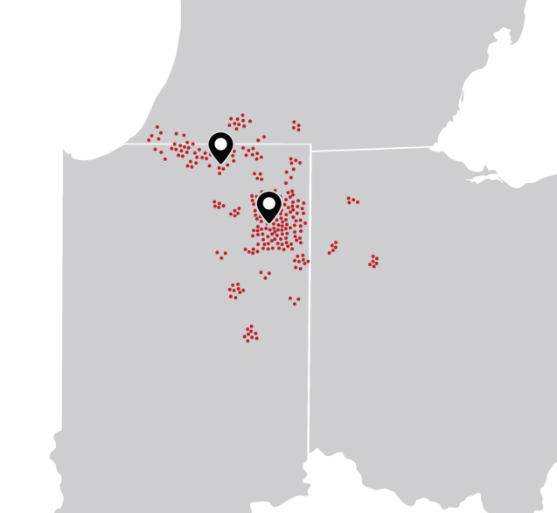By Nick Dancer and Abigail Reuille
What are control joints? How/with what do we fill them and why? These are common questions when starting your concrete flooring project, whether it be concrete polishing or epoxy floor coatings. First, control joints (sometimes called “contraction joints”) are planned, cut lines in the concrete that are cut soon after the concrete is initially poured. Their purpose is to control the cracking in the concrete slab as it shifts and settles. When concrete cures, some of the water used in pouring the concrete evaporates, causing some shrinking and cracking. With well-placed control joints, the cracking will hopefully occur along these joints. This will produce a more aesthetically-pleasing floor in the long run.
When finishing your concrete floor, unattended control joints can leave an unfinished appearance. We want your floor to look nice, perform in simple maintenance, and meet all expectations. To take care of this, we offer a few different options.
For epoxy floor coatings, filling the control joints will provide a completely seamless floor. This means water, dirt, and other debris will not enter the control joints and the control joint pattern will not be seen. Non-moving control joints (joints in a concrete floor that has already cured) will be over-filled with an epoxy resin, and then ground off before the rest of the floor is coated.
When polishing a concrete floor, filling the control joints will also result in seamlessness. The joints will not collect water, dirt, or other debris – but the joints will be visible. Because of this, different colors of joint filler are available to match either the natural hue of the concrete or a dye/stain that is chosen for the finished floor. A polyurea product is used, which has a fast cure time and proven color retention. The product is pumped into the open joint so that it overflows and is then shaved off. The rest of the polishing process then ensues.
Another method of filling control joints offered at Dancer Concrete Design is by using elastomeric joint sealants at cold joints. Cold joints are either where two different flooring types meet (tile meeting concrete) or where two different pours of concrete meet (newly poured concrete meets an older concrete slab). This elastomeric material has great heat and chemical resistance, and is able to perform well at low temperatures.

